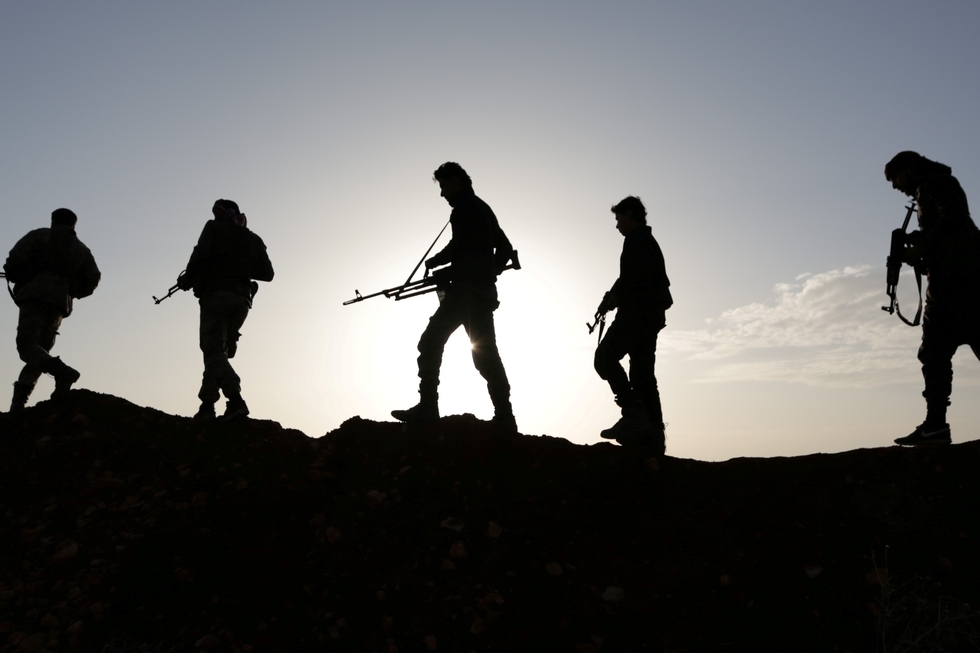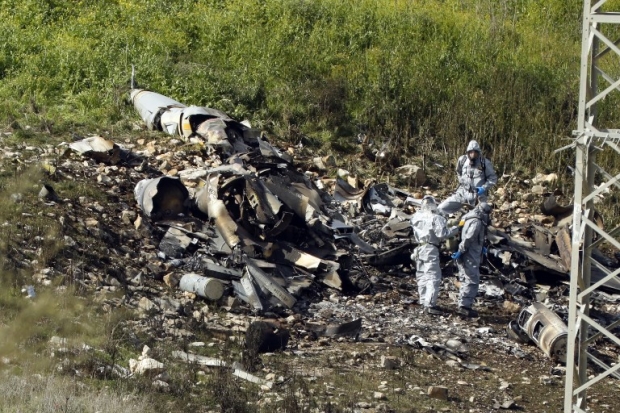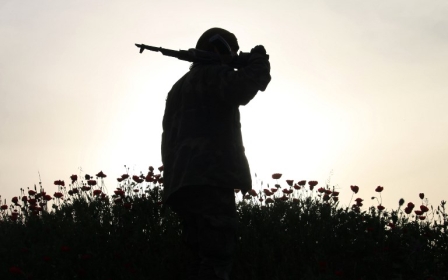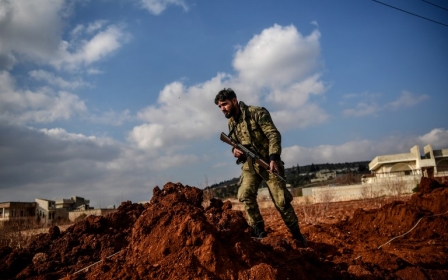Regional war is not imminent, it has already started

Over the course of three days, four intervening countries in Syria lost aircraft during operational missions. The many overlapping battles in Syria saw Russia, Iran, Turkey and now Israel for the first time lose aircraft at different moments and in different battles.
The dizzying implications of these intersecting battles – Turkey invading Afrin, Russian enforcing de-escalation zones, Iran sending drones into Israel, and Israel attacking Syrian military installations – suggest that the possibility for escalation and wider regional conflict is always imminent.
But if this week's reports are true that Israel's involvement in Syria has been much more serious and widespread than originally thought and that Iran has been acquiring intelligence information about sites in Israel, then war is not imminent but rather it has already started.
Intersecting conflicts
This is not to be dramatic but to state the obvious; Syria's intersecting conflicts are not isolated from each other and a general state of war exists between antagonistic, intervening states, even if it remains undeclared and unacknowledged.
Virtually every intervening state pursues its objectives in spite of the presence - or threat - of the other intervening states. The established red lines determine what is and is not possible for intervening states to do in Syria.
Russia has clearly tolerated the decimation of Syrian air defences by the Israeli air force, even as it shores up the Syrian government's territorial control. Similarly, Turkey has invaded Afrin against the objections of the United States and others and has essentially been given a green light to do so by the Syrian government and its regional allies.
Virtually every intervening state pursues its objectives in spite of the presence or threat of the other intervening states. These established red lines have determined what is and is not possible for intervening states to do in Syria
As the conflict has become more regionalised and neighbouring states intervene directly rather than through proxies, the entanglements of the conflict have grown ever deeper.
This new order has not been upset - or even threatened - by the downing of the Israeli F-16 jet. At the same time, the downing of the plane should not be seen as some serious victory for the Syrian government, Iran, and Hezbollah given the provocations of almost daily Israelis raids into Syrian territory.
The successful targeting of one plane does not shift the battlefield in any meaningful way.
Nor should it shift the calculations of the many actors, including Israel, intervening in Syria. We should not forget that Israel has been targeting military installations in Syria since very early on in the conflict and has been quite successful in doing so.
Neither the empty threats of retaliation from the Syrian government nor the downing of a single aircraft should change Israeli calculations in this regard. It seems to be a small price to pay given the military effectiveness of the on-going attacks in Syria.
Red lines defined
The question becomes what this may mean for the various entanglements of the conflict and whether they can be unravelled or will escalate in the coming months. To date, each country's red lines have been more or less clearly defined and enforced in various ways.
Yes, the battlefield has shifted dramatically and new sub-conflicts – Turkey's invasion of Afrin, the Syrian government's campaign in Idlib – emerge, but these are all subsumed and sustained within the larger jockeying and red lines established by the regional states.
Despite Israeli hubris and belligerent insistence that it will not tolerate any Iranian presence in Syria, there are few military options beyond its existing strategies through which it can make this happen.
Until direct state-to-state conflict in Syria breaks out, we can expect that dizzying news cycles like the one witnessed this last week when four intervening countries' planes were downed, to be the norm and not the exception
And it is unlikely that all of the other intervening states in Syria would see to it that the battlefield should shift so decisively in Israel's favour. The stalemate will continue. Intervening states will define and redefine their strategic goals accordingly as a political process with no hope of creating regional consensus putters on.
Russia may hold the keys to Syria's political future but it has proven remarkably content to allow other countries, especially Israel and Turkey, to freely and recklessly pursue their own strategic goals. This is not a recipe for de-escalation but for continued stalemate.
Intervention scenarios
Regional war is thus not imminent, it is here. It is not on the horizon but right in front of us. What forms the war takes and under what conditions will it escalate or de-escalate should inform the questions we ask about the conflict today.
To date, the forms of intervention by regional states have been palatable to all of the other intervening parties. Turkish intervention, Israeli raids and Russian bombardment have all co-existed in an ecosystem of violence that somehow sustains such entanglements while also preventing their outbreak into direct state-to-state conflict.
It is one thing for states to marshal proxies in their wars against one another, but it is an entirely different thing when they are in direct conflict with one another. This seems to be the red line that no state is yet willing to cross.
Until direct state-to-state conflict in Syria breaks out, we can expect that dizzying news cycles like the one witnessed this last week when four intervening countries' planes were downed, to be the norm and not the exception.
- Samer Abboud is an Associate Professor of International Studies at Arcadeia University and the author of Syria (Polity). He is currently a Visiting Scholar at Villanova University's Centre for Arab and Islamic Studies.
The views expressed in this article belong to the author and do not necessarily reflect the editorial policy of Middle East Eye.
Middle East Eye propose une couverture et une analyse indépendantes et incomparables du Moyen-Orient, de l’Afrique du Nord et d’autres régions du monde. Pour en savoir plus sur la reprise de ce contenu et les frais qui s’appliquent, veuillez remplir ce formulaire [en anglais]. Pour en savoir plus sur MEE, cliquez ici [en anglais].






